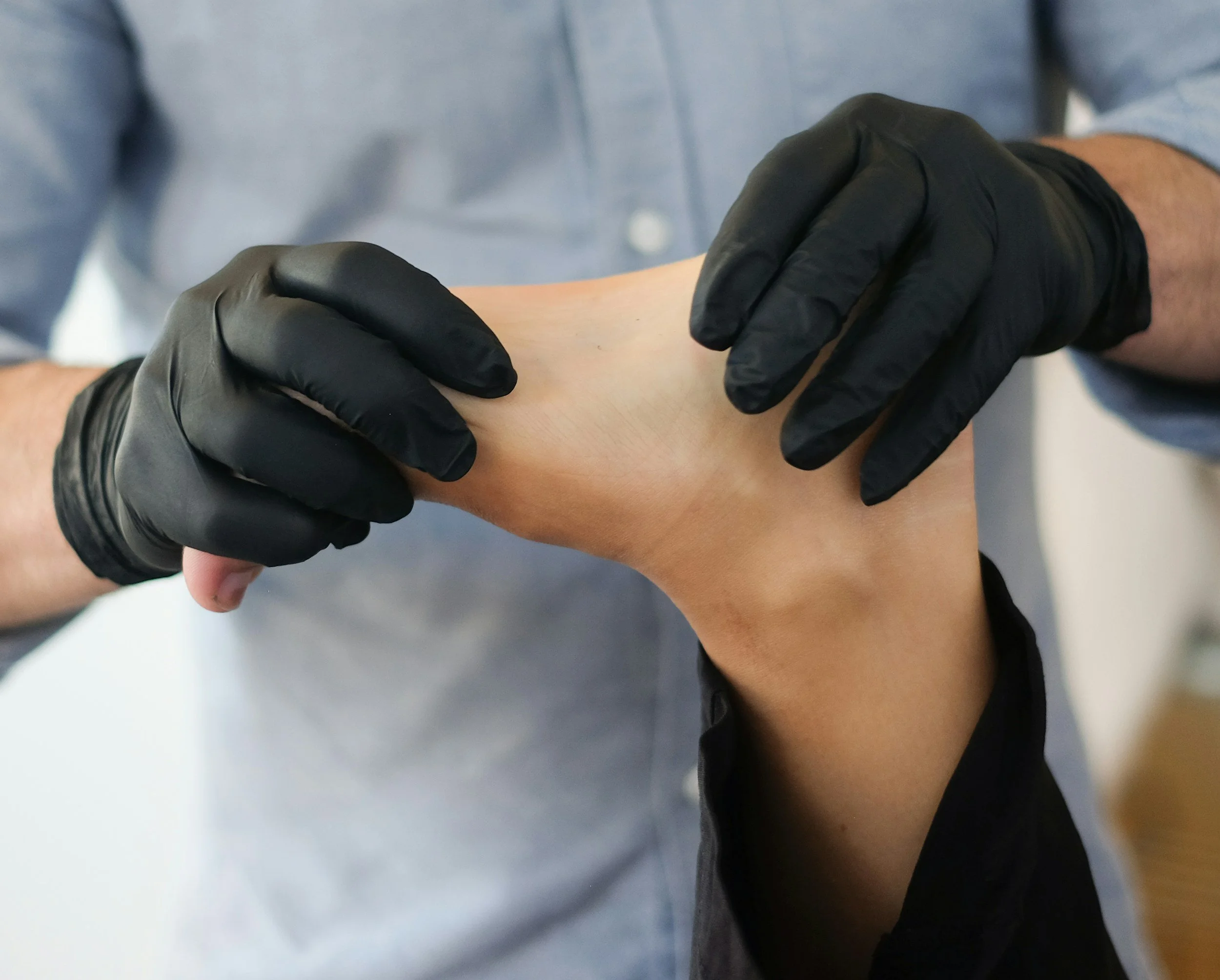Chronic pain is a complex issue affecting millions of people, often lasting months or even years. Unlike acute pain, which serves as a warning for injury, chronic pain can persist even after the underlying injury or condition has healed. For those dealing with ongoing pain
Read Morehealth tips
Evidence-informed articles on chronic pain, pregnancy care, neck/back issues, and massage therapy in Kamloops. Learn from Registered Massage Therapists.
Revolutionizing Manual Therapy: The Rise of Dermoneuromodulation
Dive into the world of manual therapy with our comprehensive guide to Dermoneuromodulation (DNM). Learn about the groundbreaking techniques pioneered by Diane Jacobs and continued by practitioners like Michael Reoch, and uncover how DNM leverages the nervous system and skin to modulate pain perception. Discover the evolution of manual therapy, the importance of understanding the sensory nervous system, and practical insights into implementing DNM in your practice. Whether you're a seasoned therapist or new to the field, this blog post provides valuable insights into the future of pain relief through innovative manual therapy approaches.
Read MorePodcast interview for Massage Therapy Now
Marcy and Mike Reoch run their own Registered Massage Therapy Clinic in Ladner, BC. In this episode we talk about the benefits and challenges of being a couple running a business together, how family values influence their business
Read MoreWhat is DNM? By: Michael Reoch, RMT →
The term DNM Stands for Dermo (skin), Neuro (nervous system) Modulation (a change from one state to another). It is a method of manual therapy/massage therapy used to change the state of the nervous system from a painful, hyperactive state to a less painful and reactive one through the skin receptors. Diane Jacobs, a Canadian PT with 40 years of experience, developed DNM as a way to treat people with chronic and persistent pain better. I have had the pleasure of learning from and working directly with Diane over the last four years.
She explains the background of the method:
The nervous system is comprised of 72 km of nerves and a brain 5 times bigger than it needs to be to run a critter our size. Even with all this length, even with the giant brain, it's tiny, only 2% of the whole body. Still, because it's busy 24/7, even when we're asleep, and because it runs all operations, it sucks up an amazing 20% (!) of all available oxygen and glucose all the time at speeds of about 270 miles per hour, so it's a big energy suck. You are part of it. It's not part of 'you' how we usually think of our body parts. You are part of it. 'You' are the human bit in there, but most of it we have in common with all the other critters out there that have vertebrate nervous systems. It runs 'you'. It looks after 'you'. It keeps 'you' alive. It puts 'you' to sleep at night so it can do other things, but it keeps your heart beating and your lungs working, right? It's your survival machine and your threat detector. It wakes 'you' up in the morning because it needs you to get it something to eat. It never shuts off! It's your operating system. It's an old, evolved thing, and some parts are really old while other parts are quite new, and they're all hooked together, and sometimes it can get itself into a glitch. Usually, that's all that's the matter. So, we do a systems check and help it fix itself.
This unique nervous system goes all the way from the brain to the skin and back. There are Billions of sensors in our skin. On average sensors are one to two cells apart. These sensors tell our brain what is happening in the world around us, what is happening within us and what is happening to us. There are many different sensors and each have specific rolls. There are sensors for just heat others for just cold, there are sensors for just heavy pressure others for light pressure, ones for quick stretch others for slow stretch and so on...
DNM is a method of manual care that puts the patient and their needs first. Instead of operating a recipe treatment, the treatment is an interaction between the patient and the therapist. We work together to find the areas that need attention and remove the tenderness and pain felt in that area. The focus is on changing the signalling within the nervous system to decrease your pain. Pain does not happen in the muscles and other tissues but in the nervous system itself; therefore, whether or not the area of pain is damaged, we can reduce that pain with DNM.
The manual part of DNM involves changing the input signalling from some of these receptors to help the brain get a better picture of what is happening to/in the body. We want to show the Brain that the area where you feel pain is not under the threat that the brain perceives it to be in.
Some effects of an effective DNM treatment:
You will get sleepy
You will have less swelling/inflammation after
You will feel warming, an ease of movement, and a softening of hardened muscles
Your pain relief will continue throughout the day of the treatment and will usually peak 72 hours after the treatment.
See it in action
How does stress make pain worse?
Do you ever have neck or back pain after a stressful day? Maybe a headache?
Why do you get tight muscles when something stresses you out?
Nerve receptors are involved in pain generation. Their job is to send a signal to the brain that they have been stimulated. The brain knows that a signal from these receptors in the body is usually a sign of danger and will usually then decide that the body is in pain, specifically in that area. In his talks, David Butler often mentions adrenaline-sensitive peripheral nerves and the amazing ion channel turnover. Specifically, this means that these nerve receptors can become extra sensitive to the chemical adrenaline, also called epinephrine. With this sensitivity, less stimulation is needed to send a danger signal to the brain. Think of a car alarm set to go off when someone breaks the window. When the alarm is hypersensitive, it may go off if a loud truck drives by. No damage happened to the car, but the alarm still went off. When we are stressed out, our bodies produce more adrenaline. This can be a good thing because it helps us to prepare for action. Unfortunately, if a nerve is damaged, stretched, or pressed on for too long, it will create "baskets" of adrenaline-sensitive fibres. As David says here:
"If a person has a highly adrenoreactive area of peripheral nerve and if they are in a state of persistent elevated stress then repeated firing into the CNS will occur. And if the person is stressed, central inhibitory controls will probably be lifted anyway, and a persistent neuropathic pain state may ensue."
What this means is that if someone has a nerve that is sensitive to adrenaline and is always stressed out, the danger signal to the brain will be almost constant. If that is the case, the Drug Cabinet in the brain will be lifted away, and persistent pain will likely develop. Not fun.
Fortunately, you have some control over this. The first line of defence is to reduce your stress level, thus reducing your adrenaline. Also, knowing that your pain is not from a damaged muscle but stress chemicals, your brain will be less likely to think of the signal as pain. Third, if you get out and move your body in a way that reduces any specific nerve perturbations you will have less chance of a future sensitivity. Most good Manual Therapists (RMT, Chiro, PT, etc) will know how to help you do this.
Most forms of massage therapy have good evidence behind their ability to reduce stress. Two of the modalities Michael implements, DNM and Simple Contact, work on a model that directly addresses pain and adrenal-sensitive nerves.
If you have any questions about this, feel free to contact us at well+able. We would love to help you out. It would also be beneficial to watch the previous stress video, the Drug Cabinet video, and the What is Pain video.


